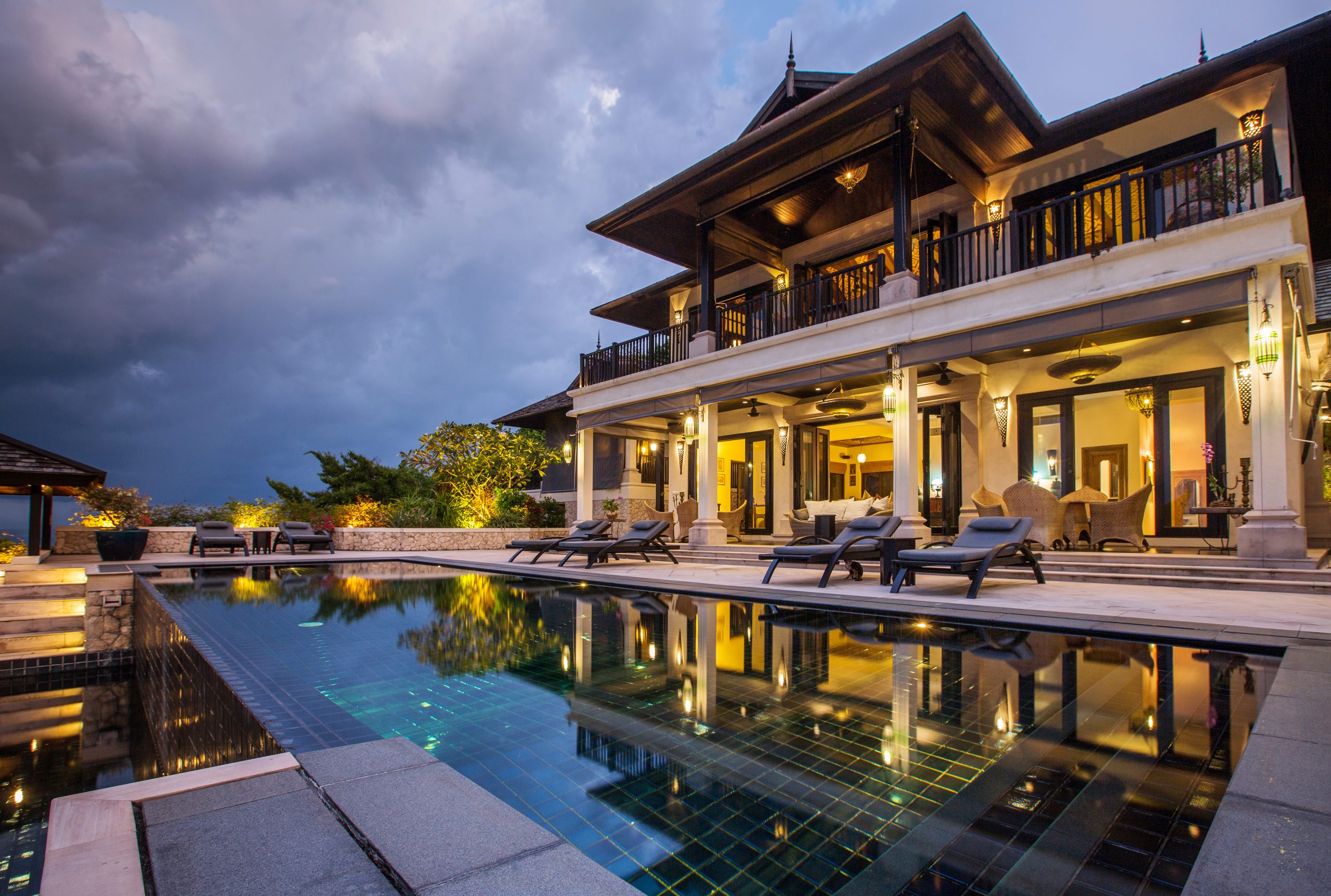The luxury home business is one of many industries that have transformed their way of thinking in response to climate change and its impact on the ecosystem. Builders and homeowners are increasingly tailoring their living spaces to combine cutting-edge technology and luxe design with a healthy respect for the environment and a desire to lessen their footprint and preserve the earth’s natural resources. Here are some of the most innovative trends in green luxury homes for 2022 and beyond.

Source Sustainable (and Local) Materials
It should come as no surprise that the most eco-friendly homes are crafted from environmentally sustainable materials. Bamboo, reclaimed wood, recycled glass and recycled steel are top choices among green luxury home builders because these materials carry a much lower environmental footprint; bamboo in particular is sturdy enough for use in construction, and grows back extremely quickly when harvested.
Where you get your material from is as important as the material itself, too. That’s why homeowners are increasingly choosing locally sourced building materials as a way of reducing their carbon impact. By avoiding the greenhouse gas emissions, noise and air pollution associated with shipping large quantities of building material across the country or the world, owners can feel confident that their home design efforts don’t negatively impact the environment. (And as a side benefit, sourcing local materials also showcases the natural beauty of a home’s regional surroundings.)
Let it Rain
The practice of collecting rainwater is certainly not new; the technique dates back thousands of years, and has been used throughout history as a means of providing people in many cultures with much needed water for themselves and their communities. But the rainwater harvesters you’ll find in today’s luxury homes use technology that extends far beyond traditional methods. These deluxe installations collect water from the house’s roof, removing any organic material like leaves or dirt and depositing it into an underground tank. A sophisticated filtration system then purifies the water, rendering it drinkable, before feeding it into the house’s main water supply. Once the rainwater tanks are empty, the system is programmed to automatically revert back to your local water supply, so there’s no need to worry about your house running out of water before the next rainfall.
Build a Better Bathroom
Green home trends for 2022 include plenty of bathroom enhancements that prioritize luxury and self-care without sacrificing environmental responsibility. Japanese-style hot soaking tubs such as the FURO® include water purification systems that reduce the need for harsh chemicals – as well as built-in heaters that keep your water warm, without the waste associated with draining and refilling the tub multiple times.
Another luxurious way to conserve energy in your bathroom (or anywhere else in your house, for that matter) is to install a hydronic radiant heating system. Elegant in its simplicity, this system involves embedding strong, flexible plastic tubing just beneath your flooring and pumping warm water through the tubing – thus creating a uniformly warm surface that radiates upward, increasing the overall temperature of your living space without the use of electricity.
Dig Deep
Geothermal heating and cooling uses a similar installation to hydronic radiant heating – that is, water flowing through pipes below your flooring. Geothermal pipes, however, are buried much deeper underground than radiant heat pipes; they need to be placed about 10 feet under the surface of the earth, where the temperature is a fairly steady 55 degrees year-round. In the winter, the warmth from the earth’s sub-layer is absorbed into the air of your home, where a heat pump warms it further. In the summer, heat from the air is dispersed down into the ground, helping the temperature inside the house to remain cool.

Preserve the Great Outdoors
Luxury green living isn’t just limited to inside your house; the property surrounding your home can be designed sustainably as well. Whether or not you live in an area that is prone to drought, consider landscaping your yard with greenery that thrives without the need for constant watering, such as geraniums, aloe and sage. Likewise, planting native species of wildflowers on your property is a beautiful way to preserve your local ecosystem (and wildflower gardens are a particularly popular trend among luxury estate owners these days).

Soak up the Sun
The environmental advantages of solar energy are undeniable, and there are many different ways in which you can harness the sun’s rays to power various aspects of your home. Look and feel-wise, however, traditional roof-affixed solar panels may not necessarily mesh with your design aesthetic.
That’s where solar roofs come in. Solar roofs offer the same electricity-generating functionality as the standard rectangular panels we’ve grown accustomed to seeing. But these cutting-edge roofs are actually composed of individual solar panel tiles, or “shingles” (technically referred to as photovoltaic shingles), each of which mimics the design of shingles used to build a conventional roof. The use of photovoltaic shingles transforms your entire roof into a solar panel in a way that is much more aesthetically pleasing than that of traditional solar panels (and more durable, on average, than slate or asphalt shingles). Tesla and Luma Solar are the current industry leaders in luxury solar roof solutions, but this is a market that is likely to expand as the desire for more green home design grows.
Gone are the days when “luxury” and “eco-friendly” were mutually exclusive terms. Environmental sustainability has become a crucial element of luxury design in recent years – and is sure to play a key role in the homes of the future.



